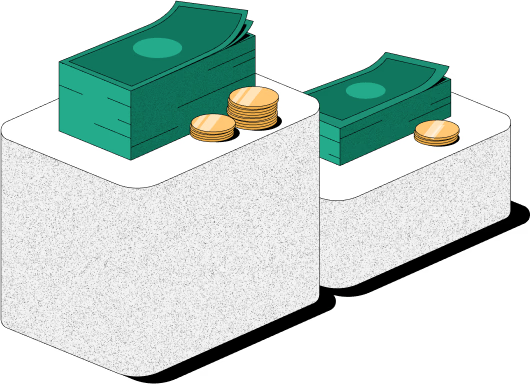Debt-to-Income Ratio Calculator
Your debt-to-income ratio (DTI):
%Use our Debt Optimizer app to automatically calculate your DTI and find ways to lower your payments and improve credit score.
Our full app not only calculates your Debt-to-Income ratio precisely with all the payments in your credit report, but also calculates the best ways to lower payments by scanning across 1000s of available loan options.
Try our Debt Optimizer today. For free!
To calculate your estimated DTI ratio, simply input your income and payments. If estimating what your DTI would be on a future home purchase, don’t include any rent you won’t pay in future. Please note this calculator is for educational purposes only and is not a denial or approval of credit. The accuracy of our DTI calculation is based on the accuracy and completeness of the information you provide. When you apply for credit, your mortgage lender may calculate your debt-to-income (DTI) ratio based on verified income and debt amounts that may differ from what you’d estimate, especialy if you’re self-employed or recently changed jobs. If you feel uncomfortable entering in any information, you can read our guide below and do the math offline at home!Learn how to calculate your mortgage debt-to-income ratio
That’s all, don’t get thrown off by any complicated words lenders use. After your credit score, it’s probably the most important way lenders (especially mortgage lenders) determine how risky it would be to lend to you. Quickly calculate your debt-to-income ratio for mortgages with our DTI ratio calculator, or try our debt optimizer that calculates your DTI (along with ways you can quickly lower it).What is a Debt-to-Income Ratio? And How Do You Calculate Yours?
Your debt-to-income ratio (DTI) is the percentage of your gross monthly income that goes to any monthly obligations you owe such as debts and rent. Because this ratio takes into account all your debts and obligations, it is sometimes referred to as a “back-end” debt-to-income ratio by mortgage lenders. Lenders evaluate your financial situation with this DTI ratio precisely to figure out how much cushion there is in your monthly budget for emergency expenses and other shocks.
To calculate debt-to-income ratios for mortgages, sum up all your monthly debt obligations, plus mortgage payments and housing expenses. This includes personal loans, car loans, child support, student loans, and minimum payments on any revolving debt like credit cards.
Then you need to determine your monthly gross income before taxes. This includes all sources of regular income you and any coborrowers have if you’re figuring out your DTI for a future mortgage.
The final step in calculating your debt-to-income ratio is dividing your total monthly debt payments by your monthly (gross) income. To read this as a percentage, multiply it by 100, e.g. 0.39 is 39%
Your Debt-to-Income Ratio Formula

Sum up your total monthly “debt” payments. Anything fixed that you have to pay, such as:
Sum up your monthly (household, pre-tax) income - including any regular and consistent government or pension payments like social security.
DTI = Debt Payments / Income
Example: if you have $2200 from Step 1 and $5000 in income from Step 2, your DTI is $2200/$5000 = 0.45 or 45%
What's a Good Debt-to-Income Ratio to Buy a Home?
A great debt-to-income ratio is under 36%. You shouldn’t have a problem getting denied for any mortgage with a debt-to-income ratio of 36% or less. Quite a few government loan programs, e.g. for borrowers with high credit scores, allow DTI to go up to 43% or even 50%.
Over 50%, the typically cheapest (government agency-sponsored) mortgages will no longer be available. There are still smaller, niche programs – often called “non-qualifying mortgages” because they don’t do as strict a job judging your ability to repay. You can use our debt optimizer or our calculator to quickly find the maximum house you could buy.
Your Debt-to-Income Ratio (DTI) is an important reflection of your financial health to lenders - we can easily calculate it for you as well as help you lower it. DTI gives you one view on how much safety cushion you have for unplanned expenses or changes in income. It’s also useful for buying a home, as a low DTI gives you access to the lowest cost sources of financing. Even if you don’t qualify for a standard mortgage today, we can help you qualify for a mortgage in the future by optimizing your debts and use of credit.